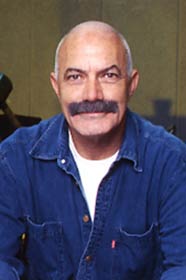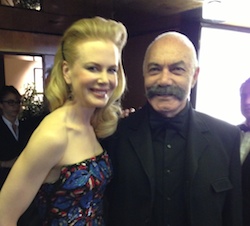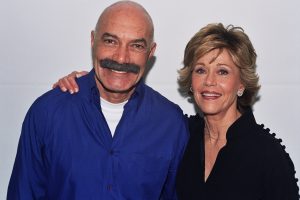In The Crowd, originally titled “One of the Mob,” King Vidor examines with unprecedented realism the predicament of two individuals in the anonymity and indifference of New York City, which is meant to embody the vices of every Big City.
Grade: A (***** out of *****)
| The Crowd | |
|---|---|

Theatrical release poster
|
|
To avoid overly melodramatic treatment, King Vidor focuses on the hopes and frustrations of two average individuals, struggling to survive amidst the harsh metropolitan.
He cast the two protagonists with unknown players: James Murray (an extra who happened to walk by) and Elizabeth Boardman (who later became Vidor’s wife).
On his first sight of New York City, John Sims (Murray) states: “You’ve got to be good in that town if you want to beat the crowd.” He is sure that his distinctive qualities would raise him high above the common herd.
However, things work out quite differently for him. John ends up being a clerk, holding a meaningless job in a huge office and living in a small and shabby apartment. He says at one point: “Look at that crowd! The poor slobs, all in the same rut.”
The film benefited immensely from the on-location shooting in New York City, an unusual practice at the time. Vidor shot many scenes in the streets, using real crowds instead of extras.
The technical virtuosity of “The Crowd” is remarkable, particularly its startling opening image. A beehive of activities is recorded (through hidden cameras) in the streets of Manhattan, with the camera scaling the heights of a skyscraper. The camera climbs up, glides through a window into a large office, then stops at the (anti)hero’s desk.
The imagery of “The Crowd” had tremendous influence on the way that the Big City would be portrayed in Hollywood movies of the future.
Some scenes stand put in their visual and emotional power. The scene in which John learns of his father’s untimely death is stylized, shot in a stairwell with forced perspective (inspired by German Expressionism).
Vidor was riding high at the time, having directed the critically acclaimed
Some scenes stand put in their visual and emotional power. The scene in which John learns of his father’s untimely death is stylized, shot in a stairwell with forced perspective (inspired by German Expressionism).
Vidor was riding high at the time, fresh off from directing the critically acclaimed silent, The Big Parade, two years earlier.
One of the most critically acclaimed silent films, The Crowd was nominated for two Academy Awards: Unique Artistic Picture and Best Director. The winners were Murnau’s “Sunrise,” and director Frank Borzage for “Seventh Heaven.”
“The Crowd” led to a sequel, of sorts. In “Our Daily Bread” (1934), Vidor shows again his belief in the rehabilitative and regenerative functions of rural life. Deeply disturbed by the unemployment and low morale of the Depression, Vidor sought to channel “this nationwide unrest and tragedy into a film.” “I wanted to take my two protagonists out of The Crowd,” Vidor notes in his memoirs, “and follow them through the struggles of a typical young American couple in this most difficult period.”
End Note: Murray’s Suicide
James Murray’s already erratic screen career would end up in a suicide less than a decade later.
My Oscar Book:
Oscar Nominations: 2
Unique and Artistic Picture
Director: King Vidor
Oscar Context
The award for Unique Artistic Picture prevailed for only one year, and the winner for 1927-28 was Sunrise.
Frank Borzage won the Best Director Oscar for Seventh Heaven (aka 7 Heaven)
One of Oscar’s biggest losers, King Vidor was nominated five times for Best Director but never won a legit statuette.
See Review and Comment of Our Daily Bread.
Cast
Eleanor Boardman as Mary Sims
James Murray as John Sims
Bert Roach as Bert
Estelle Clark as Jane
Daniel G. Tomlinson as Jim
Dell Henderson as Dick
Lucy Beaumont as Mary’s mother
Freddie Burke Frederick as “Junior”
Alice Mildred Puter as daughter
Credits:
Directed by King Vidor
Written by Joseph Farnham (titles)
Screenplay by Vidor, John V.A. Weaver; Story by Vidor, Harry Behn (uncredited)
Produced by Irving Thalberg
Cinematography Henry Sharp
Edited by Hugh Wynn
Production and distribution company: MGM
Release dates: Feb 28, 1928 (NYC); March 3, 1928 (US)
Running time: 98 minutes
Silent (English intertitles)











